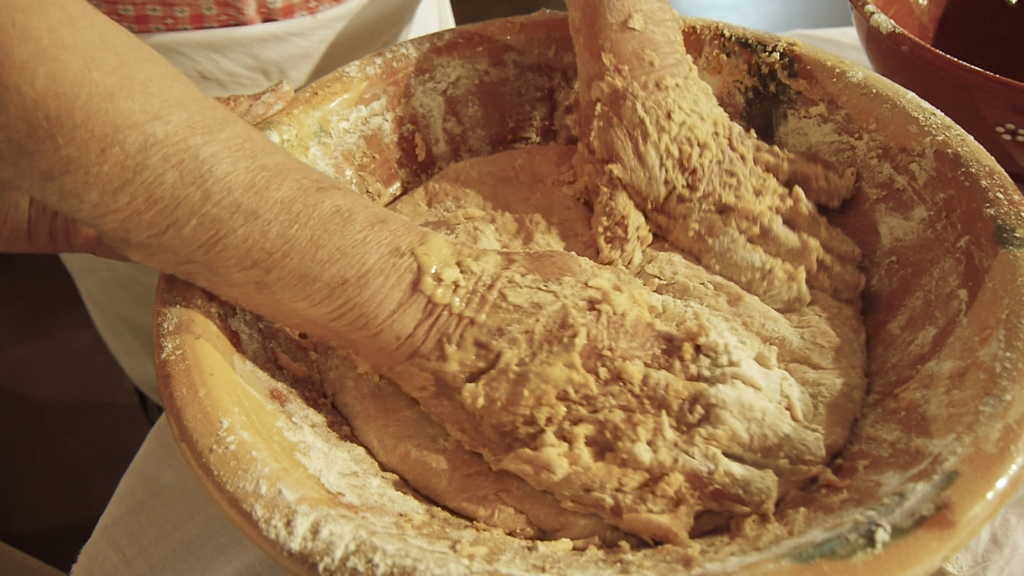Na Golegã, chamam merendeira a um doce tradicional que o povo fazia por altura do Dia de Todos-os-Santos. Era uma grande festa, que intercalava períodos de trabalho no campo. O ciclo do trabalho agrícola, noutros tempos, marcava não só o calendário das colheitas, mas sobretudo a vida e a cultura das pessoas. Por isso, preparar estes doces com o pouco que tinham era uma das poucas coisas que as mulheres podiam fazer para haver alguma alegria e leveza nos intervalos dos períodos árduos de labuta.
As merendeiras levam abóbora, farinha, azeite (no passado, azeite novo), especiarias e açúcar. O Rancho Folclórico da Golegã, que alberga um Museu Rural, preserva os objectos e as memórias do povo que trabalhou o campo, e é aqui que se preserva também a história das merendeiras. Recomendo uma visita. Para comer o doce, encontramo-lo durante todo o ano no Café Central, na Golegã. Agora já sabe onde provar mais uma especialidade doceira bem portuguesa.
***
In Golegã, there is a traditional sweet people call “merendeira”, which was made for All Saints’ Day. It was a big event, an interval between periods of work in the fields. The cycle of agricultural labor, in the past, defined not only the harvest schedule, but above all the life and culture of the population. So, preparing these sweets with the little they had was one of the few things women could do to have some joy and relaxation between arduous periods of labor.
The “merendeiras” are made with pumpkin, flour, olive oil (in the past, young olive oil), spices and sugar. The Rancho Folclórico da Golegã, which houses a Rural Museum, preserves the objects and memories of the people who worked the fields, and it is here that the history of the “merendeiras” is also preserved. I highly recommend a visit. To taste the sweet, you can find it all year round in the Café Central, in Golegã. Now you know where to taste another Portuguese sweet specialty.
PUBLICIDADE
